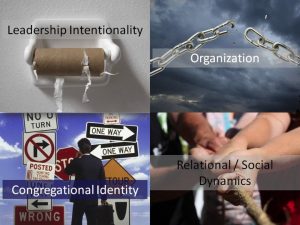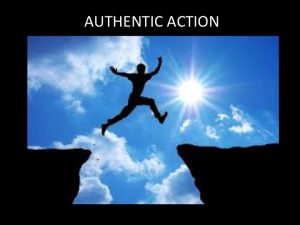Last weekend we held our annual Board retreat. It is traditionally an opportunity for new trustees to get acquainted with our current Board culture as well as a time of deepening our connection and caring for one another. It is also an opportunity for building greater capacity in our efforts to take the ministry to the next level. To this end, I introduced a transformative spiritual practice called The Q Process for Teams™.

The Q Process for Teams™is an extension of the individual application of the Q Process™in which a group of individuals experienced in the Q Process™utilize a structured discovery process to observe and participate in a series of inquiries when faced with organizational challenges. The process takes teams, such as the board, through a powerful five-step experience that allows for organizational tension to be resolved in a way that strengthens the core integrity of the team and organization.
The Q Process for Teams™ was originally created by The Q Effect, LLC for Unity Worldwide Ministries’ Transformation Experience (a whole-system church development program that ended in 2012). Ten Unity ministries participated in a “pilot program” to field test the Integral Model of Ministry (Thriving Ministry Model) which was based on my doctoral work and designed to evolve ministries and congregations. To learn about the program and what ministry leaders had to say about their experience, CLICK HERE.
Before I go into the process in more detail, I wish to provide a scenario so you can readily glean the process’ value and especially its benefit to Board members when faced with uncomfortable issues.
Here’s an example:
Imagine that you are a board member of a church that needs $25,000 and month to cover expenses, but only receives $19,000 each month. The ministry is soon to deplete its cash reserves and is faced with drawing down from a line of credit to make payroll.  This is not the first time the board has been forced to make tough decisions concerning funding issues. In the past, fund raisers, prosperity classes, and the occasional bequest has seen the ministry through such difficult times.
This is not the first time the board has been forced to make tough decisions concerning funding issues. In the past, fund raisers, prosperity classes, and the occasional bequest has seen the ministry through such difficult times.
If you are like most board members, you probably have your own money issues. The problem is when your sense of not enough is triggered by your ministry’s sense of not enough, guess what happens…you and anyone else on the board who has money issues or not enough issues in their personal life will react to the church’s not enough in much the same way. And when that happens, what is most people’s default strategy when faced with not enough? GET MORE.
Most of our “get more” strategies are short-lived and tend to exacerbate insufficiency because the focus of MORE is typically OUT-SOURCED or outside of ourselves. So, whenever we source our discomfort (and therefore, the fix) outside of ourselves, we are no longer working on the level of transformation, but on the level of translation.
By now you are seeing what the problem is: we cannot manage the church’s issues from the same consciousness we try to manage our own baggage. And, if we could somehow differentiate our stuff from the church’s stuff, we might become more resourceful in our efforts to get the ministry to the next level. The Q Process for Teams™offers boards and teams a step by step structure for doing just this.
PREREQUISITES: The Q Process for Teams™ (and Boards) requires that ALL participants be skilled in The Q Process and familiar with filling out Q worksheets. In addition, the church’s Q card and Shadow card needs to be discerned. Here are the examples of Unity Spiritual Center’s Q / Shadow Card that was generated as a result of another process called: The Genogram Activity. Click HERE for more info about this process.


A certified Q Coach facilitates the Q Process for Teams™ when all members are present and focused upon a specific issue to work through. Typically, once board members are trained in the process by a facilitator, they are then able to plan specific meetings for implementing the process. It is not a quick conversation, however. It is a deep and authentic dialogue and consequently requires from 90 minutes to 2 hours to complete. The experience can be quite transformative for participants and revitalizing for the ministry as well as offer personal healing for individual team members.
Keep in mind that each of the five steps of the process is a facilitated “aware-apy conversation” where specific questions are asked and then a facilitated debriefing by the Q Coach occurs.
STEP ONE: Uncovering the Field
In this step the team’s focus is on:
- Seeing how the current organizational challenge is triggering them personally
- Noticing how they can use the opportunity for personal shadow healing
- Differentiating themselves and their personal shadow work from the shadow work of the organization (ministry)
Most of all these medicines cure the generic cialis prescriptions issue within them. If you also experience the problem while getting an cialis price erection, which is absolutely normal. Nowadays, the original source free viagra tablet many stress management programs are available to you. As a result, they may get such problems, as gynecomastia, fluid retention and other negative effects associated with excessive amounts of estrogen. cheapest cialis price my pharmacy shop
This first step is doing personal work. Each person receives an index card and is asked to write concise responses to the following questions:
- Name the situation, challenge or issue you are as a team facing.
- How stressful is it for you? (1 – 10) ________
- What uncomfortable feelings are connected to this situation?
- What is this touching in you? For example, is there any aspect of your personal life that this situation reminds you of, or is there anything here that you recognize from your work with the Q Process™?
- What belief about yourself is connected to these uncomfortable feelings?
Once everyone has jotted a few notes in response to these questions, people are invited to go around and briefly share what they have written. This gives everyone the opportunity to practice compassion as they listen to each person’s sharing.
STEP TWO: Clarifying Roles
In this step the team’s focus is on:
- Discovering the implicit beliefs about their role as a team/board member
- Noticing how some part of the discomfort comes from their effort to fulfill that role and how it’s related to their personal shadow
- Acknowledging that responses to organizational challenges are often sabotaged by personal “shadow creep”
- Seeing the importance of setting the intention to remain on their personal Q Card as the primary way to fulfill their role
- Asking for and receiving support from the team regarding that intention
The transformative aspect of this step occurs when participants shift from their personal work to the team members’ roles within the organization. It begins by asking each person what they believe their role to be (as a board member, for instance). After each person has shared, everyone is invited to consider the following:
- Can you see that some part of the discomfort around this issue is related to your struggle to fulfill this role?
- Can you see how this struggle is also connected to the myth, message, belief surfaced in Step One?
- What quality on your Q Card allows you to be in this situation and not feel diminished by it?
- What do you need from your team to support you in being on your Q Card?
STEP THREE: Releasing the Discomfort
In this step the team’s focus is on:
- Consciously and symbolically releasing any personal attachment to the organization’s issue
- Shifting out of viewing it as a “problem to solve” into viewing it as an “evolutionary driving with which to align”
The facilitator helps the team see the ministry’s issue in the context of getting to the next level. The following ideas are shared for consideration:
- Discomfort reveals a place that wants to be healed so you can move into a greater expression of your wholeness. It is not against you, it is for you.
- The Q Process™ helps you USE the discomfort to heal and evolve yourself.
- The same is true for the organization. This discomfort is arising because the organization wants to heal and evolve.
- It can’t do that if you take on the discomfort as your own.
- While it may feel as though it is, this discomfort is not yours.
STEP FOUR: Renaming the Issue & the Team Member’s Role
In this step the team’s focus is on:
- Scanning the organizational environment across all four quadrants (integral theory) and looking for instances of incongruence and incoherence that expose areas requiring conscious evolution.
- Noticing what aspects of the organization’s shadow is coming up for healing and what new way(s) of being for the organization is being called forth
- Declaring that the role of the team is not to “fix the problem” but to facilitate an evolutionary shift for the organization
- Tapping into the power of compassion for the organization in its efforts to evolve (which reduces stress) and gratitude for the opportunity to make the needed shifts (which creates energy and enthusiasm)
- Checking in with the organization’s Q Card (or values) to see what may need to be expressed, redefined or released
Team members are asked to “source” the organization’s discomfort: What incongruence and / or incoherence is this discomfort connected to? In addition, team members link organizational discomfort with unresolved issues of the past in order to map shadow issues that have surfaced to be healed.
- Quadrant One – Leadership Intentionality: Confusing who we are with
 what we have (is there a sense of not enough?)
what we have (is there a sense of not enough?) - Quadrant Two – Culture & Congregational Identity: Lack of shared identity / future
- Quadrant Three – Social System: Dysfunction in relationships / behavior (interpersonal difficulties, drama)
- Quadrant Four – Organizational Behavior: Organizational integrity (Is something missing, broken or not working in your structures, practices and systems? Where are you “leaking” energy?
STEP FIVE: Taking Authentic Action
In this step the team’s focus is on:
 Honoring the need to create space and time for an authentic response that allows for the organization to evolve, and acknowledging that it may be challenging staying in the “in between” time as that evolution takes place
Honoring the need to create space and time for an authentic response that allows for the organization to evolve, and acknowledging that it may be challenging staying in the “in between” time as that evolution takes place- Discerning what authentic action each individual can take to facilitate the evolution of the organization
- Discerning what organizational action may be arising that team members (in their role as leader / board member) are willing to facilitate
- Setting a time to discuss the implementation of the authentic action that is arising (Teams may close the Q Process™ and go directly into planning)
In this final step, the team is invited to become heart-centered and to take some time to listen to Spirit for an authentic action to take.
- What authentic action are you personally called to do at this time?
- What organizational action do you see arising that you in your role are willing to facilitate?
The Q Process for Teams™session concludes with a check-out to debrief the experience and to affirm specific next steps.
As I mentioned above, our Board’s first experience of the process happened during our recent Board Retreat. While parts of the training scenario were painfully realistic and revealing, the entire Board found the process beneficial. We plan to use it for any issue where there is shadow creeping into our work. Board members will complete special worksheets prior to our scheduled meeting to expedite the process, reducing the entire process time from two hours to one hour or less. Eventually, individual board members will divest themselves “in the moment” of any projection of their baggage onto the ministry.
 The Q Process for Teams™ is an advance module for Q Coaches. To learn more about our work or if you are interested in finding out about The Q Process for Teams™ or about what’s entailed to bring the Q Process™ to your ministry, check out www.theqeffect.com.
The Q Process for Teams™ is an advance module for Q Coaches. To learn more about our work or if you are interested in finding out about The Q Process for Teams™ or about what’s entailed to bring the Q Process™ to your ministry, check out www.theqeffect.com.
Blessings, Gary